Summer of Fire, Smoke and Ash
Why has this year’s fire season in the West been so intense? Is this a precursor of what is becoming the new normal?
On Monday October 16, Dominick DellaSala was a guest on KBOO’s Locus Focus. In previous conversations they stressed the important role that fire plays in ensuring healthy forest ecosystems. But after this summer of fire, smoke and ash across the Pacific Northwest, and now Northern California, how do we reconcile our understanding of the need for forests to burn from time to time, with the horrific realities now in our faces.
Listen to the full interview at KBOO.fm
Summer of Fire, Smoke and Ash
Why has this year’s fire season in the West been so intense? Is this a precursor of what is becoming the new normal?
On Monday October 16, Dominick DellaSala was a guest on KBOO’s Locus Focus. In previous conversations they stressed the important role that fire plays in ensuring healthy forest ecosystems. But after this summer of fire, smoke and ash across the Pacific Northwest, and now Northern California, how do we reconcile our understanding of the need for forests to burn from time to time, with the horrific realities now in our faces.
Listen to the full interview at KBOO.fm
Fire management faulted in Calif. disaster
By Marc Heller, E&E News reporter

Originally Published: Friday, October 13, 2017 at E&E: Greenwire
The widespread damage from wildfires in California’s wine country could have been avoided with better fire management policies, researchers say.
A more consistent and thoughtful approach to defensible space around homes would reduce wildfire threats and is a better long-term approach than thinning forests far away from populated areas, said Alexandra Syphard, a senior research scientist at the Conservation Biology Institute.
Syphard, speaking yesterday at a forum sponsored by critics of the timber industry, said policymakers should stick to a “from the house out” strategy to protecting homes and businesses, and not rely on management of wildland areas to control fires.
Fire management faulted in Calif. disaster
By Marc Heller, E&E News reporter

Originally Published: Friday, October 13, 2017 at E&E: Greenwire
The widespread damage from wildfires in California’s wine country could have been avoided with better fire management policies, researchers say.
A more consistent and thoughtful approach to defensible space around homes would reduce wildfire threats and is a better long-term approach than thinning forests far away from populated areas, said Alexandra Syphard, a senior research scientist at the Conservation Biology Institute.
Syphard, speaking yesterday at a forum sponsored by critics of the timber industry, said policymakers should stick to a “from the house out” strategy to protecting homes and businesses, and not rely on management of wildland areas to control fires.
Wildfire safety starts at home
By Annette McGee Rasch / for the Mail Tribune
 After such a smoke-filled summer, many are fatigued by wildfire and hope next year’s fire season will be less intense.
After such a smoke-filled summer, many are fatigued by wildfire and hope next year’s fire season will be less intense.
But fire officials and scientists say if future impacts are to be minimized, the public must take personal responsibility on their own properties, embrace common-sense rural development plans and support science-based forest policy.
“Especially in the wildland-urban interface zones, people need to become more responsible for their own survivability,” said Illinois Valley Fire District Chief Dennis Hoke. “We can’t look for the government to solve everything. People should ask themselves, ‘What would it take to create the defensible space that can spell the difference between losing or saving my home if a wildfire runs through?’ ”
Geos scientist testifies in congress on climate change and forest fires
On Wednesday September 27, 2017 the House Natural Resources Subcommittee on Oversight and Investigations held a hearing on wildfire policy. Geos Institute’s President and Chief Scientist Dr. Dominick DellaSala testified. You can read his full testimony here, read his Questions for the Record statement, watch a video of the hearing, and read coverage by E&E Daily below.
Guest Opinion: We need responsible forest fire policies, not more logging
By Dominick DellaSala
Many people view large wildfires as only destructive. But fires in Oregon’s forests are exactly what these ecosystems need to thrive.
After wildfire, the forest is transformed into the earliest stage of forest growth that allows a completely new fire-adapted community of plants and animals to get their time in the sun. A hike up Grizzly Peak near Ashland or the Biscuit burn area near Cave Junction reveals a young forest remarkably being repopulated by a rich web-of-life that not only thrives in severely burned areas but also requires them to survive. Dead trees anchor the soils preventing erosion, provide habitat for scores of insect-eating bats and birds that keep destructive forest pests in check, and shade new seedlings from intense sunlight. Soil nutrients are recycled as the forest rejuvenates quickly.
Attempting to put out every wildfire in the backcountry disrupts these natural cycles, is unsafe for firefighters and, most importantly, diverts limited funding from protecting homes and communities. Logging to stop forest fires also does not work because large fires are not like campfires — they are mainly driven by extreme weather conditions, not fuels.
Guest Opinion: We need responsible forest fire policies, not more logging
By Dominick DellaSala
Many people view large wildfires as only destructive. But fires in Oregon’s forests are exactly what these ecosystems need to thrive.
After wildfire, the forest is transformed into the earliest stage of forest growth that allows a completely new fire-adapted community of plants and animals to get their time in the sun. A hike up Grizzly Peak near Ashland or the Biscuit burn area near Cave Junction reveals a young forest remarkably being repopulated by a rich web-of-life that not only thrives in severely burned areas but also requires them to survive. Dead trees anchor the soils preventing erosion, provide habitat for scores of insect-eating bats and birds that keep destructive forest pests in check, and shade new seedlings from intense sunlight. Soil nutrients are recycled as the forest rejuvenates quickly.
Attempting to put out every wildfire in the backcountry disrupts these natural cycles, is unsafe for firefighters and, most importantly, diverts limited funding from protecting homes and communities. Logging to stop forest fires also does not work because large fires are not like campfires — they are mainly driven by extreme weather conditions, not fuels.
Why we need a rational fire policy
Geos Institute Chief Scientist and partners brief Congressional aides on ecological fire science and the need for a rational fire policy.
Why we need a rational fire policy
Geos Institute Chief Scientist and partners brief Congressional aides on ecological fire science and the need for a rational fire policy.
Latest News
Stay Updated!
Sign up to stay updated on our current initiatives and receive information you can use to build resilience in your community.
Forest Legacies
This post was created as part of our past initiative Forest Legacies.


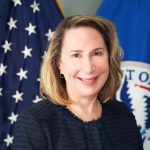 Samantha Medlock is President of Climate Risk Advisors, helping communities and organizations advance equity, sustainability, and resilience. Her career began chasing floods as a local official in Texas Flash Flood Alley—a hands-on experience that still shapes her approach to climate and disaster risk management.
Samantha Medlock is President of Climate Risk Advisors, helping communities and organizations advance equity, sustainability, and resilience. Her career began chasing floods as a local official in Texas Flash Flood Alley—a hands-on experience that still shapes her approach to climate and disaster risk management.
 Arsum is the Senior Adaptation and Coastal Resilience Specialist for the National Wildlife Federation’s Southcentral Region. In this role, she advances climate adaptation efforts, with a focus on nature-based approaches to address the impacts of climate change and extreme events across the Gulf region. She has authored and co-authored numerous publications on climate impact assessments and adaptation solutions. Additionally, she regularly participates in state-based coastal resilience and hazard mitigation planning across the Gulf, collaborating with regional and local stakeholders.
Arsum is the Senior Adaptation and Coastal Resilience Specialist for the National Wildlife Federation’s Southcentral Region. In this role, she advances climate adaptation efforts, with a focus on nature-based approaches to address the impacts of climate change and extreme events across the Gulf region. She has authored and co-authored numerous publications on climate impact assessments and adaptation solutions. Additionally, she regularly participates in state-based coastal resilience and hazard mitigation planning across the Gulf, collaborating with regional and local stakeholders.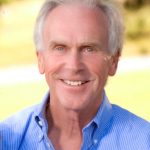 Frank is the former President of the Reinsurance Association of America. Frank currently serves on the Advisory Board of the OECD’s International Network for the Financial Management of Large-Scale Disasters, the RAND Center on Catastrophic Risk Management and Compensation, and the University of Cincinnati’s Carl H. Lindner III Center for Insurance and Risk Management Advisory Board.
Frank is the former President of the Reinsurance Association of America. Frank currently serves on the Advisory Board of the OECD’s International Network for the Financial Management of Large-Scale Disasters, the RAND Center on Catastrophic Risk Management and Compensation, and the University of Cincinnati’s Carl H. Lindner III Center for Insurance and Risk Management Advisory Board. Jim is a multilingual world traveler. Based in Bavaria during the 1970s, Jim spent most of this period in India, Afghanistan and Nepal, where he founded and operated a charitable medical clinic serving Tibetan Refugees. He settled in Oregon in 1983 on a forested ranch in the Umpqua National Forest.
Jim is a multilingual world traveler. Based in Bavaria during the 1970s, Jim spent most of this period in India, Afghanistan and Nepal, where he founded and operated a charitable medical clinic serving Tibetan Refugees. He settled in Oregon in 1983 on a forested ranch in the Umpqua National Forest.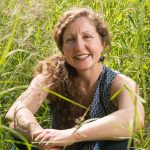 Dr. Micah Hahn is an Associate Professor of Environmental Health in the Institute for Circumpolar Health Studies at the University of Alaska-Anchorage. She received her joint PhD in Epidemiology / Environment and Resources from the University of Wisconsin-Madison and her MPH in Global Environmental Health from Emory University. Subsequently, she was a postdoctoral fellow for the CDC Climate and Health Program, and in this position worked collaboratively with the CDC Division of Vector-borne Diseases and the National Center for Atmospheric Research. Her research focuses on understanding the health impacts of climate change and working with communities to develop locally-relevant adaptation and resilience-building strategies. Dr. Hahn is also on the Management Team of the Alaska Climate Adaptation Science Center.
Dr. Micah Hahn is an Associate Professor of Environmental Health in the Institute for Circumpolar Health Studies at the University of Alaska-Anchorage. She received her joint PhD in Epidemiology / Environment and Resources from the University of Wisconsin-Madison and her MPH in Global Environmental Health from Emory University. Subsequently, she was a postdoctoral fellow for the CDC Climate and Health Program, and in this position worked collaboratively with the CDC Division of Vector-borne Diseases and the National Center for Atmospheric Research. Her research focuses on understanding the health impacts of climate change and working with communities to develop locally-relevant adaptation and resilience-building strategies. Dr. Hahn is also on the Management Team of the Alaska Climate Adaptation Science Center. Michael is a former Founding Principal of Resilient Cities Catalyst, a global non-profit helping cities and their partners tackle their toughest challenges. He is currently the Executive Director of Climate Resilience Academy at the University of Miami.
Michael is a former Founding Principal of Resilient Cities Catalyst, a global non-profit helping cities and their partners tackle their toughest challenges. He is currently the Executive Director of Climate Resilience Academy at the University of Miami.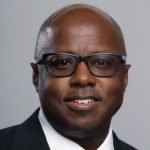 Dr. Quintus Jett is a consultant, educator, and strategist for public causes. He has a doctorate in Organizations & Management from Stanford University, and a two-decade faculty career which spans schools, departments, and programs of business, engineering, liberal studies, divinity, and public and nonprofit management. Following Hurricane Katrina in 2005, Dr. Jett launched a volunteer project in New Orleans, which enlisted residents, students from over a dozen colleges and universities, and hundreds of others to field map the city’s Gentilly district, Lower Ninth Ward, and New Orleans East. Dr. Jett is an innovator in higher education, bridging the divide between academic research and the other priorities of the modern university, including student access and diversity, community engagement, and providing foundations for life-long learning in today’s rapidly changing world.
Dr. Quintus Jett is a consultant, educator, and strategist for public causes. He has a doctorate in Organizations & Management from Stanford University, and a two-decade faculty career which spans schools, departments, and programs of business, engineering, liberal studies, divinity, and public and nonprofit management. Following Hurricane Katrina in 2005, Dr. Jett launched a volunteer project in New Orleans, which enlisted residents, students from over a dozen colleges and universities, and hundreds of others to field map the city’s Gentilly district, Lower Ninth Ward, and New Orleans East. Dr. Jett is an innovator in higher education, bridging the divide between academic research and the other priorities of the modern university, including student access and diversity, community engagement, and providing foundations for life-long learning in today’s rapidly changing world. Scott is Monfort Professor of Atmospheric Science at Colorado State University. He has written about 100 publications in the peer-reviewed climate literature, is a former editor of the Journal of Climate, and served for five years as founding Science Chair of the North American Carbon Program.
Scott is Monfort Professor of Atmospheric Science at Colorado State University. He has written about 100 publications in the peer-reviewed climate literature, is a former editor of the Journal of Climate, and served for five years as founding Science Chair of the North American Carbon Program. Linda has many years of experience in disaster preparedness and resilience. She has been an elected official on the Linn County Iowa Board of Supervisors, Chair of the Metropolitan Planning Organization, the East Central Iowa Council of Governments, the statewide Mental Health Developmental Disability and the Linn County Board of Health. Langston is a former president of the National Association of Counties (2013-2014).
Linda has many years of experience in disaster preparedness and resilience. She has been an elected official on the Linn County Iowa Board of Supervisors, Chair of the Metropolitan Planning Organization, the East Central Iowa Council of Governments, the statewide Mental Health Developmental Disability and the Linn County Board of Health. Langston is a former president of the National Association of Counties (2013-2014).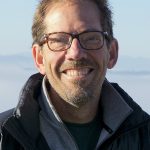 Ken works with families and organizations as a mediator, organizational consultant, trainer and facilitator. Along with his passion for helping people prepare for and reduce climate change, Ken also volunteers as a mediator through Mediation Works and is passionate about supporting youth through mentoring with Boys to Men of Southern Oregon.
Ken works with families and organizations as a mediator, organizational consultant, trainer and facilitator. Along with his passion for helping people prepare for and reduce climate change, Ken also volunteers as a mediator through Mediation Works and is passionate about supporting youth through mentoring with Boys to Men of Southern Oregon. Matthew is a retired high school teacher who was once honored as Oregon High School Social Studies Teacher of the Year. Before his teaching career he was in the restaurant business in Portland. He is also a lawyer who has been a member of the Oregon State Bar Association since 1980.
Matthew is a retired high school teacher who was once honored as Oregon High School Social Studies Teacher of the Year. Before his teaching career he was in the restaurant business in Portland. He is also a lawyer who has been a member of the Oregon State Bar Association since 1980. Andrea is the Resilience Policy Advisor for the North Carolina Office of Recovery and Resiliency. She works across state agencies and with local governments to increase the state’s resilience to the impacts of climate change.
Andrea is the Resilience Policy Advisor for the North Carolina Office of Recovery and Resiliency. She works across state agencies and with local governments to increase the state’s resilience to the impacts of climate change.